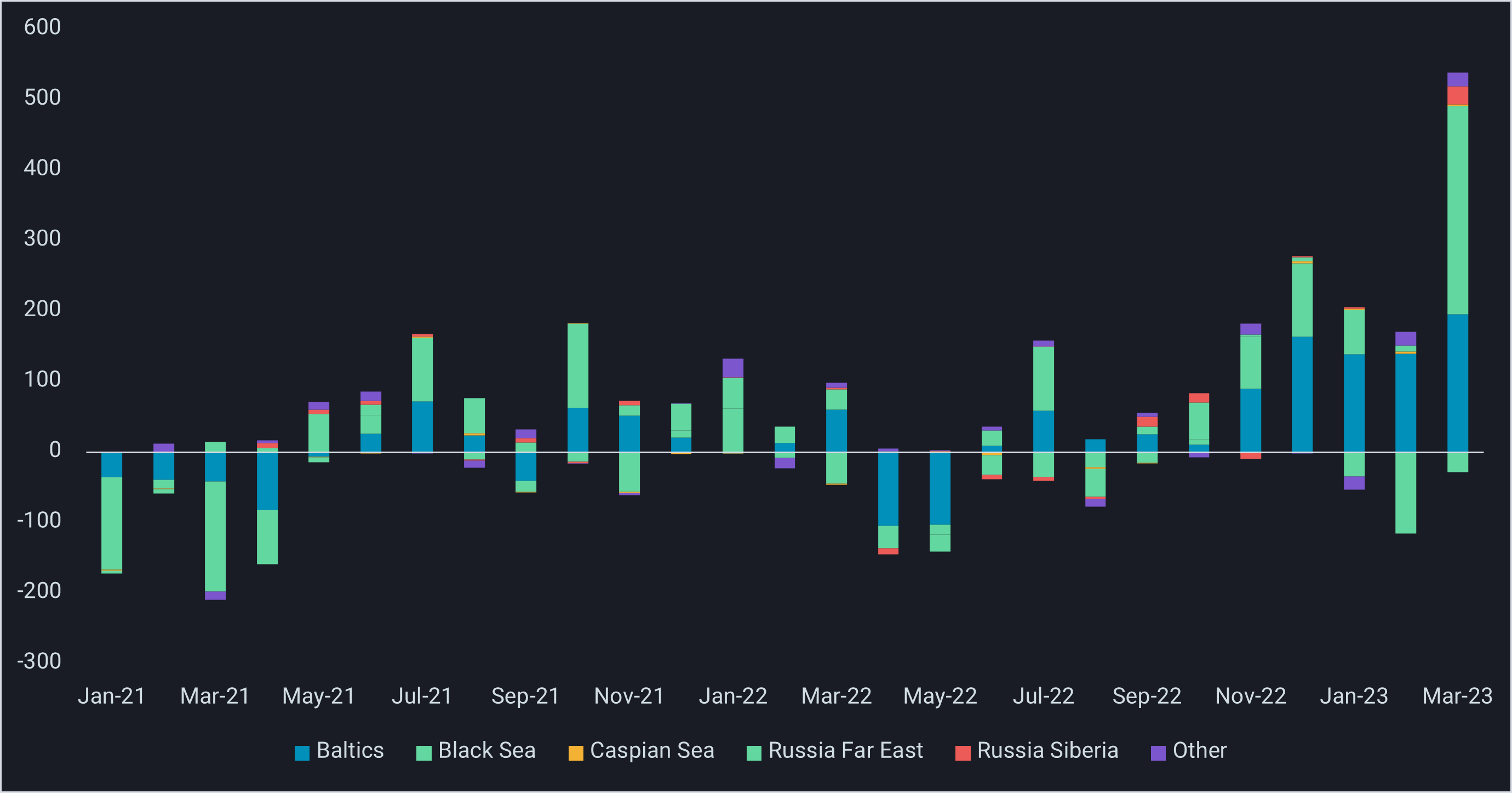Russian diesel exports climb to a historical high in March with a surge out of the Black Sea
Russia diesel exports surge in March, rising both from the Baltic and Black Sea. Will volumes continue to rise?
Russian diesel exports surged 33% in March m-o-m with exports from the Black Sea alone growing by 270kbd m-o-m to reach a historical high since 2016. Black Sea ports of Novorossiysk and Tuapse are the primary ports involved in increased flows, however Vortexa data also shows a jump in exports from Taman and Port Kavkaz pushing Black Sea diesel exports 295kbd higher y-o-y while diesel exports from Baltics also rising 196kbd y-o-y.
Logistics, especially pipeline capacity and pumping stations have long favored diesel moving from Russian inland refineries to Baltic ports for export as opposed to the Black Sea, however new river supply programmes for 2023 look to be in the works which could bolster deliveries toward Black Sea ports. It could also be that the rise reflects delayed shipments from February when poor weather conditions disrupted loading operations (Argus).
Where are diesel flows going?
Turkey was the biggest recipient of Russian diesel in March hiking imports by 47% m-o-m and pushing out almost all other suppliers as it now receives 84% of its total diesel imports from Russia.
From Turkey, the Russian diesel flows diverge based on origin. Black Sea exports moved toward East and West Med regions (Libya, Egypt, Tunisia) while Baltic flows have shifted fairly evenly in terms of percentage share to Brazil, Saudi Arabia, Egypt and Morocco causing an increase in tonne miles. The reshuffling of flows is having a big impact on freight by hoovering up MRs that now operate moving Russia cpp and are unlikely to return to mainstream trade (Read more), tightening the global MR market.
Looking forward, Russian diesel exports are likely to decline in the near term due to extensive refinery turnarounds occurring in April – June which includes Lukoil’s 220kbd Volgograd refinery (Argus), a dominant contributor to diesel flows to the Black Sea.
According to JODI data, between 2018-2023 Turkey hit a maximum closing stocks of 17,859,000 bbls, 43% above the latest stock number for January 2023. Even if imports to Turkey continue to pour in at this rate, it could take some time to hit tank tops giving Russia time to search for alternative buyers.
